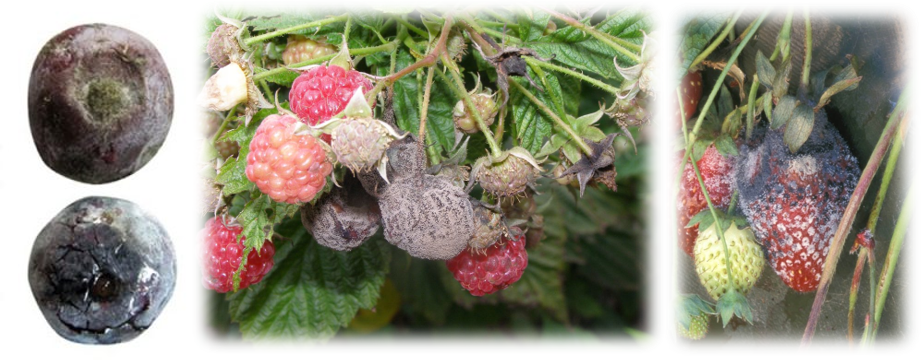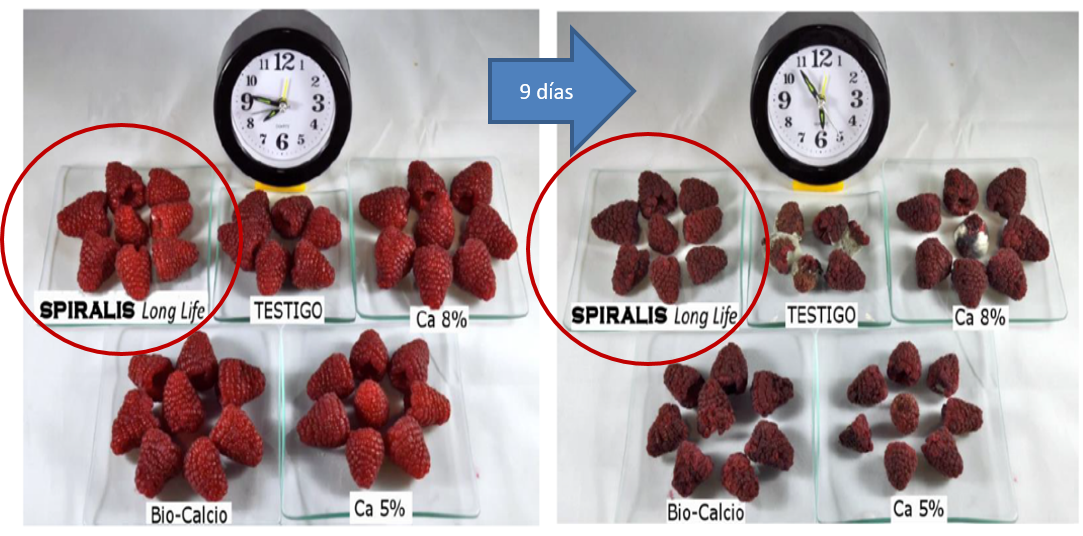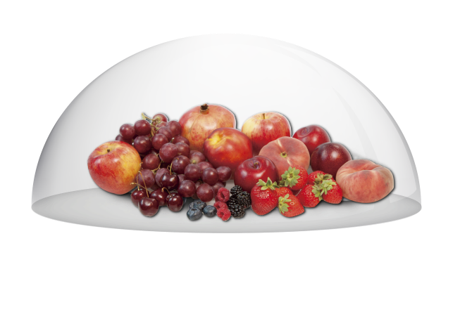Red fruits are very healthy and are characterized by their high antioxidant capacity thanks to their composition and especially to their content in polyphenols (a topic that we already addressed in previous Cultinews https://www.cultifort.com/mejora-el-contenido-polifenolico-con-faskolor/ ).
Despite its high content of phenolic compounds, red fruits are very perishable, that is, they have a very short post-harvest life. For example, the cranberry has a maximum life of 2 to 4 months, depending on the handling and conservation conditions, the blueberry of 1 to 2 weeks, the strawberry of 7 to 10 days and the raspberry and blackberry of 2 to 5 days. In addition, they are fruits that are characterized by their high susceptibility to mechanical damage and the invasion of some pathogenic organisms.
These factors contribute to potential post-harvest losses, which is why its optimal conservation is very important, especially if it is for the fresh market.

Figure 1. Symptoms of rot due to Botrytis cinérea in bilberry and raspberry (left and center) and Rhizopus stolonifer in strawberry (right).
It is very important to harvest the berries in their optimal state of consumption, since they are non-climacteric fruits, except for blueberries. That is, they are fruits that are not capable of continuing to ripen once harvested.
Another important characteristic of berries is that they are insensitive to cold damage after harvest, so it would be convenient to extend their post-harvest life, keeping them at low temperatures (above freezing point) in order to control possible rotting. .
The main causes of the deterioration of this type of fruit are physical and mechanical damage, rots caused by pathogens (especially Botrytis cinerea and Rhizopus stolonifer), water loss and damage caused by extreme concentrations of gases such as CO2 (used for its conservation in chambers).
From the Technical Department of Cultifort we want to offer a solution to improve post-harvest life in berries, recommending the use of Spiralis Long Life or Spiralis ECO Long Life, prior to harvesting. It is a biostimulant that activates the natural self-defense mechanisms of plants against different types of stress (biotic and abiotic) and accelerates the processes of tissue lignification (physical barrier), ostensibly improving post-harvest life and protecting the fruits against rotting. Furthermore, Spiralis can also be used for preventive control against possible attacks by pathogens, such as powdery mildew on strawberries and rust on raspberries, among others.

Figure 2. Effect of Spiralis Long Life on post-harvest life in raspberry (https://www.youtube.com/watch?v=PdD-QGv92CM )
Its mode of action is based on the activation of systemic resistances in the plant, increasing the synthesis of calose and lignin, to reinforce the cell wall, as well as phytoalexins and PR proteins, such as β-1,3-endoglucanases and chitinases, whose enzymatic activity is directed to degrade the cell wall of the invading pathogen.
Spiralis Long Life and SPIRALIS ECO Long Life is a natural product, mainly composed of selected organic acids and peptide complexes, related to green and red algae. It is not a plant protection product; it is free of residues and it is exempt from a safety period.


